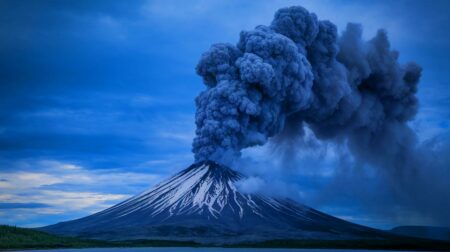Major cities across the world – Chennai, Nairobi and Mexico City among them – rely on tanker trucks to provide or supplement water resources, but these mobile tanker water markets (TWM) aren’t well understood and there’s little data on their impacts. A new study on these oft-illegal water deliveries in Jordan offers sobering insights on TWMs, especially in an increasingly hot and arid Middle East.
In Jordan, TWMs supply 15% of all drinking water at expensive prices, and account for 52% of all urban water revenue, according to a team of global researchers, including those from Helmholtz Centre for Environmental Research – UFZ in Germany, Stanford University, and the Jordan University of Science and Technology. Their work was published in the journal Nature Sustainability on Monday.
“Water utilities in Jordan have long adopted scheduled supply interruptions to ration scarce freshwater resources and limit water losses,” the authors explain. Where public supply is available, it may be for as little as six hours per week, although the average is 36 hours per week. Access is only expected to get worse, with projections of per capita water availability that falls below 50% of the current level by 2100.
Water scarcity and black market impacts
Households and businesses across Jordan “use storage tanks and tanker water deliveries to cope with public supply intermittency, low piped network pressure and limited connection size,” the authors said. “Tanker trucks source their water predominantly from rural wells.”
When compared with the licensed, legal TWMs in operation, the vast majority of black market operators avoid related pumping charges or limits meant to protect groundwater resources. That’s despite Jordan’s 10-year effort to shut down illegal agricultural and tanker wells, many of which are found around Amman and the city of Zarqa.
“An estimated 91% of all tanker water is obtained from illegal sources,” the researchers said. They’re draining Jordan dry, and even now, wells have to be drilled to a depth of 220 meters in order to still be able to extract water from them. While the environmental impact on water resources is obvious, there are others too: The tanker delivery system is woefully inefficient and leads to unnecessary carbon emissions, for example.
The tanker water is about 4.8 times as expensive as piped water because TWM providers can command high prices due to water scarcity. TWMs also make the scarcity worse, because they’re responsible for 27% of the overabstraction of Jordan’s groundwater, which continues beyond sustainable levels.
The TWM future, in Jordan and beyond
The researchers developed models to estimate future demands, using 10 different simulations, and they project that the share of tanker water in household water use will grow 2.6-fold by 2050. Tanker water prices will rise further due to local groundwater depletion and expanding transport distances.
Interventions like water market policy reform and public system investment, such as Jordan’s water desalination plans, can help. Repairing the leaks from existing water pipes, for example, could limit the increase in uncontrolled groundwater extraction to 19% by 2050.
“Informal water supply institutions are increasingly relevant to nearly one billion urban residents facing water supply intermittency. This study develops an approach for analyzing informal water supply institutions within coupled human and natural systems models, applicable to TWMs in cities around the world such as Mexico City, Karachi, Beirut and Mumbai,” the authors conclude.
“The case of Jordan is emblematic for an unfolding water crisis exacerbated by unreliable urban water supply.”
Did you like it? 4.3/5 (29)







